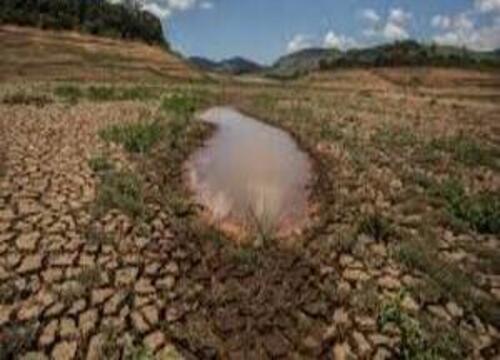
El Nino emerges, weak monsoons likely in India: US weather agency

El Nino, expected since the beginning of the year and linked to weak monsoons in India, has emerged, the Climate Prediction Centre (CPC) of the US National Oceanic and Atmospheric Administration (NOAA) said in a press release on June 8.
“The threshold has been crossed,” Sivananda Pai, weather scientist who led the long-range forecasting team at the Indian Meteorological Department (IMD) said. Pai is on deputation to the Institute for Climate Change Studies in Kottayam as director.
The threshold, Pai was referring to, is the rise in sea surface temperature above the 30-year average by 0.5 degrees C in the El Nino 3.4 region. It is now 0.8 per cent, the NOAA said. El Nino 3.4 region is a 6 million sq km area, five degrees above and below the Equator, and 170–120 west longitudes in the central Pacific.
Also read: Rainfall deficit-causing El Nino likely in coming months: why India should worry
Pai said that the Pacific trade winds have also weakened in tandem. This is expected to weaken monsoons in India though the countervailing weather influence, known as the Indian Ocean Dipole (IOD), is expected to be favourable. IOD will emerge around July–August and continue till October. Positive IOD means warmer sea temperature in the western Indian Ocean and cooler temperature in the eastern part.
“Climate change could exacerbate or mitigate certain impacts related to El Nino. For instance, it could lead to new records for temperatures, particularly in areas that already experience above-average temperatures during El Nino,” NOAA said.
El Nino has a long memory in the sense that it sustains for a year once it emerges. There is an 84 per cent chance of greater than moderate strength El Nino and a 56 per cent chance of a strong El Nino developing when it is winter in India, NOAA added.
In February, NOAA had said that there was a 49 per cent probability of El Nino occurring in June–July–August.
There have been 16 El Nino episodes in June-July-August since 1950, as per CPC data. India has experienced rainfall deficits during the monsoon season in eight of the past 22 years.
Also read: One-fifth of India’s population likely to be exposed to below-normal rainfall: SASCOF
Pai had said in a Zoom interview with The Federal in March that the odds of weak monsoons were higher because the past three years were “slight aberrations” from the long-term trend of India being in an “epoch” of deficient rainfall.
There is no one-to-one correlation between El Nino and deficient rainfall in India. The 2013–14 Economic Survey noted, for instance, that during the previous 10 El Nino years, India suffered a rainfall deficit of 10 per cent or more in six years. While a majority of drought years in India coincide with El Nino, the “the reverse link is not that strong,” the Survey noted.
In 2019, El Nino had delayed the onset of southwest monsoons in Kerala and June rainfall was in deficit by 67 per cent. But the weakening of El Nino conditions and emergence of positive IOD in July led to increased rainfall activity from the last week of July and the rainfall for the season exceeded the long period average (LPA) by 10 per cent.
In 2014, El Nino conditions had occurred after the monsoon season, from September onwards. Yet rainfall that year was 12 per cent lower than the LPA. The phenomenon persisted strongly throughout the following year. Rainfall in 2015 was 86 per cent of the LPA.
Also read: One-fifth of India’s population likely to be exposed to below-normal rainfall: SASCOF
In 2009, El Nino emerged during June, July and August. The southwest monsoon rainfall deficit that year of more than 26 per cent was the worst since 1972. Though kharif production fell, agricultural growth improved slightly because of a good rabi crop.
The Met office on 26 May forecast that monsoons would be normal with rainfall in the range of 96 per cent and 104 per cent of the long period average. The LPA, which is the average of rainfall received between 1971 and 2020, is 87 cm.
It said normal to below normal monsoon was likely in most parts of northwest India and adjoining west-central India, northern parts of peninsular India and the foothills of the Himalayas. Normal to above normal rainfall was likely in most parts of peninsular India, some areas of east-central India and many areas of the northeast and extreme north India.
The monsoon arrived in Kerala this year on May 8. The onset last year was on May 29. It is not only the overall rainfall during the monsoon season that matters but also its distribution across regions and during the season. There have been recurring episodes of strong downpours alternating with prolonged dry spells over the past few years. Farmers will have to rely on the two-week extended range IMD forecasts to plan plantings and subsequent farming activities.
Also read: After text messages on phone, extreme weather alerts on TV, radio soon


